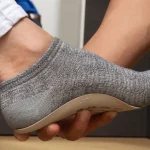The company may have solidified their future in performance basketball with the signings last month of Kobe Bryant, LeBron James and Carmelo Anthony, but the addition of the key retro icons strengthens Nikes foothold in the fashion end of the footwear category as well.
Under the blockbuster, multi-player deal announced Wednesday, Nike will pony up $305 million and assume certain Converse liabilities. The deal puts to rest the idea of the IPO Converse had hoped to pull off this past Spring, seeking roughly $86 million to pay off about $30 million in debt and otherwise cash out the investors. The company was looking for a valuation in the $300 million range, but pulled back in an uncertain global economy.
The market watched over the last few months as the IPO never priced and the anticipated offering dates kept getting pushed back each month.
Converse was bought out of bankruptcy in June of 2001 for $117.5 million by the then Footwear Acquisition, Inc., headed by Marsden Cason and Bill Simon. The two built a very strong team with Jack Boys as CEO and Jim Stroesser to head up the sales effort.
Boys said of the Nike deal, “Our partnership with Nike creates significant opportunity for us to execute our vision for building a leading global sports footwear and apparel brand by growing our core business and expanding our product offerings into other sports performance and lifestyle categories.”
“Converse is one of the strongest footwear brands in the world with great heritage and a long history of success,” said Tom Clarke, Nike’s President of New Business Ventures. “Converse’s management has done an excellent job of reestablishing this beloved brand with consumers and we look forward to supporting them as they continue to implement their growth strategy.”
The global opportunity is evident when looking at total sales volume worldwide. While the company posted $205 million in revenues in 2002, just $181 million came from direct sales. Total worldwide sales of the Converse brand hit $580 million for the year. Nike will most likely take a look at the licensee structure and could likely build a billion dollar global business here with a little effort. EMEA, for instance, represented just 16% of Converse sales in 2002 but, it contributes 35% of Nike sales.
Nike is paying roughly what Converse will do in business in 2003, and the additional $300 million in volume will go a long way to offset the estimated lost Nike volume at Foot Locker. But the reaction from Wall Street was mixed.
Noelle Grainger, J.P. Morgan Securities, said in a published report, “With conservative assumptions, we believe that Converse should add $.08 (in earnings) on an annual basis. With only a 2.3% market share and its backlog up 42%, Converse offers significant growth opportunity in the U.S. and is complementary to Nikes existing business.”
Some analysts suggested that Nike might use the Converse brands to enter the mass market, where it does not have a presence.
“Because they were never going to enter the channel with the swoosh or Nike, they would want to enter the market with a brand that has a lower price point that they could leverage their manufacturing and sourcing capabilities with,” said Raymond Jones, an analyst at Delafield Hambrecht Inc.
The addition of the Converse brand gives Nike a vehicle to service the mass market and value channels without harming the Nike name. With Nike providing sourcing and design capabilities, they can easily capture huge share in the down market, where athletic footwear is but an afterthought.
Nike has a unique ability to leverage its strengths to make the retailer a winner and that will clearly benefit Converse. They were forced to pick partners to accelerate growth coming out of bankruptcy, but should now have the added muscle to enable them to develop a multi-channel, multi-retailer segmentation strategy that could facilitate nice growth for the brand.
One thing many analysts agree on is that this acquisition does not signal any change in the current and deepening rift between Nike and Foot Locker.
In a Lehman Brothers report, Bob Drbul said, “Although Foot Locker is Converses largest customer and accounts for 20% of revenues, we do not believe that this acquisition is indicative of any change in the dynamic of the Nike/Foot Locker relationship.”
It remains to be seen if the new owners will maintain the exclusive Converse relationship with Foot Locker. Nike may push to open the brand up to Footaction and The Finish Line where it can draft off of the Nike brand, giving Nike, Inc. a nice addition to the business in 2004.
We see this as a terrific acquisition for Nike. There are clearly limits to how much the company can grow its domestic footwear business, especially in light of its decision last year to pull most of its allocated and marquee products from Foot Locker and the retailers subsequent pullback on other goods. Now, Nike has taken out a competitor and at the same time gets further diversification in a highly competitive athletic footwear arena. They bought the trifecta of key NBA players just last month, some say to ensure that the resurgent Reebok and a struggling adidas could not strengthen their basketball rosters, and have now picked up a key retro fashion icon brand in the category as well.
The talk from both companies is that all will remain the same, but if we look at past acquisitions that Nike has made we should undoubtedly see – at a minimum – some key Nike personnel lend a hand in areas of expertise that will benefit Converse the most. While Hurley, Nike Bauer Hockey and Cole Haan have been kept separate from the sprawling Beaverton campus, the Converse brand is much closer to Nikes core competency sweet spot in basketball and athletic footwear & apparel for the masses.
Only time will tell.















